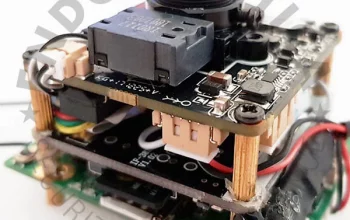Most so-called UAVs (Unmanned Aerial Vehicles), that is, remotely controlled miniature airplanes have the typical shape of a plane, although of course on a smaller scale. This shape comes with its disadvantages, such as a reduced maneuverability and reduced payload, plus they need a runway for takeoff and landing.
The solution to this kind of problem comes from VTOL (Vertical Takeoff and Landing) UAVs, using rotors which make them resemble a helicopter rather than a plane. For example, the ones manufactured by the UK-based AESIR do not have any external rotating parts on the outside of the vehicle body, their shape resembling a UFO instead of a helicopter of plane.
To fly, it uses the so-called Coanda effect, that is, the tendency of a flow of air or liquid, which meets a curved solid body along its way, to follow the body’s curve instead of a straight line. In this specific case, the airflow is generated in the middle of the vehicle thanks to a rotor. The air is conveyed downwards in order to follow the vehicle’s curved body, thus generating an airlift. The airflow also causes the UAV’s body to rotate in a direction opposite to the rotor’s, but this rotation has been eliminated by creating air vanes and stabilizing flaps on the outside.
Depending on models, these UAVs can carry between 10 and 1000 kgs, so the smaller models can be equipped with a camera and used for surveillance, reconnaissance and air photography operations, both civilian and military; bigger models, capable of carrying heavy equipment with a range of up to 8 hours, can be used to send supplies to troops on a frontline.
For a better understanding of how these UAVs work, you can watch this video.



